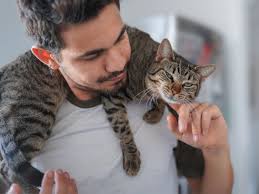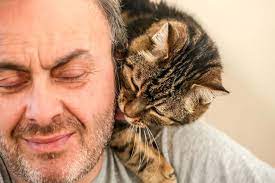Why is my Cat Suddenly Clingy


Introduction
Cats are known for their independent nature, but when your feline friend starts exhibiting clingy behavior out of the blue, it can leave you wondering why. A sudden change in your cat’s behavior, such as becoming overly attached or constantly seeking attention, may raise concerns. In this article, we will explore the reasons behind a cat’s sudden clinginess and discuss effective ways to address this behavior.
Signs of a Clingy Cat
- Increased Affection: A clingy cat may display a sudden surge in affectionate behavior, such as constant rubbing against your legs or demanding to be petted.
- Following Everywhere: If your cat starts following you around the house or insists on being in close proximity to you all the time, it could be a sign of clinginess.
- Attention-Seeking Behavior: Clingy cats may exhibit behaviors like excessive meowing, pawing, or nudging, trying to grab your attention.
Possible Reasons for Clinginess
- Separation Anxiety in Cats: Cats can develop separation anxiety, especially when there have been changes in their routine or environment, such as a recent move or the introduction of a new family member.
- Changes in the Cat’s Environment: Cats are creatures of habit, and sudden changes in their surroundings, such as rearranged furniture, new pets, or unfamiliar smells, can trigger clinginess.
- Health Issues: It’s essential to rule out any underlying health problems that could be causing your cat’s clingy behavior. Pain, discomfort, or medical conditions can make cats seek comfort and reassurance from their owners.
Attention and Affection
- Ensuring Quality Time: Spend dedicated time with your cat every day, engaging in activities they enjoy, such as play sessions or grooming.
- Interactive Toys and Puzzles: Provide your cat with interactive toys and puzzles to keep them mentally stimulated and entertained when you’re not available.
Stress and Anxiety OF Clingy cats
- Creating Safe Spaces: Set up cozy hiding spots or designated areas where your cat can retreat to when they need some alone time.
- Reducing Stressful Triggers: Identify and minimize potential stressors in your cat’s environment, such as loud noises or excessive visitors, to help alleviate their anxiety.
How to Deal with a Clingy Cat
- Providing Enrichment: Enrich your cat’s environment with scratching posts, climbing trees, and toys to keep them mentally and physically engaged.
- Establishing a Routine: Cats thrive on routine, so establishing a consistent schedule for feeding, playtime, and sleep can provide them with a sense of security.
Gradual Desensitization
- Step-by-Step Approach: If your cat is clingy due to separation anxiety, gradually expose them to brief periods of separation, increasing the duration over time.
- Positive Reinforcement: Reward your cat with treats or praise when they remain calm and relaxed during periods of separation.
Seeking Veterinary Assistance
Consulting a veterinarian: If your cat’s clingy behavior persists or is accompanied by other concerning symptoms, it is advisable to seek veterinary assistance. A veterinarian can conduct a thorough examination to rule out any underlying medical conditions that may be contributing to the clinginess.
Understanding Your Cat’s Needs
Observing Body Language: Pay attention to your cat’s body language and vocalizations. Understanding their cues can help you identify when they are seeking attention or feeling anxious.
See also: Why Does My Cat Bite My Legs?
Providing Security and Comfort: Ensure that your cat has access to a comfortable sleeping area, litter box, and fresh water. Creating a safe and secure environment can help reduce clinginess.
Conclusion
A sudden change in your cat’s behavior, such as becoming clingy, can be a cause for concern. By identifying the potential reasons behind this behavior and implementing appropriate strategies, you can help your cat feel more secure and content. Remember to seek veterinary advice if the clinginess persists or if you have any concerns about your cat’s health.
FAQs (Frequently Asked Questions) about clingy cats
Q: Is clinginess in cats a sign of a health problem?
Clinginess can sometimes be related to underlying health issues. It’s essential to consult a veterinarian to rule out any medical conditions.
Q: How can I help my cat adjust to changes in the environment?
Gradual introductions, providing a safe space, and offering reassurance can help cats adjust to changes in their environment more easily.
Q: Can separation anxiety be treated in cats?
Yes, separation anxiety in cats can be managed through behavior modification techniques, gradual desensitization, and, in severe cases, with the help of a professional animal behaviorist.
Q: Should I ignore my clingy cat to discourage the behavior?
Ignoring a clingy cat may not always be the best approach. It’s important to find a balance between providing attention and gradually encouraging independence.
Q: When should I be concerned about my cat’s clingy behavior?
If your cat’s clinginess is sudden, intense, or accompanied by other worrisome symptoms like aggression or appetite changes, it’s recommended to consult a veterinarian.
In conclusion, understanding why your cat is suddenly clingy is crucial for addressing their needs effectively. By identifying potential triggers, providing attention and enrichment, and seeking professional advice when needed, you can help your furry companion feel secure and content in their environment.




